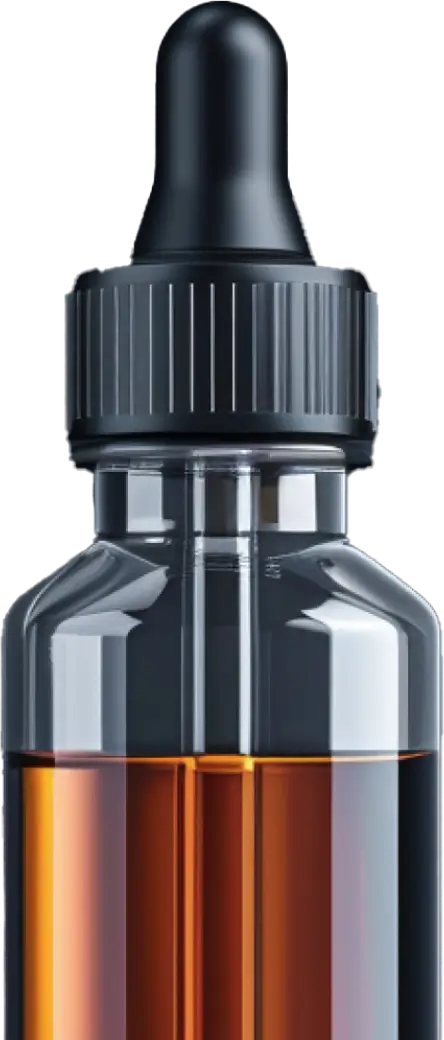On Sept. 18, a regional medical center in London, Ontario held a news conference to report that a 17-year-old patient had nearly died from a lung condition the doctors believed was caused by vaping.
Middlesex-London Health Unit medical officer Dr. Chris Mackie told the assembled reporters that he knew which products the patient had used, but “We're not releasing information about the brand information because that would imply that this is something coming from one brand, when clearly looking at the international evidence, that's not the case."
The U.S. news media at that point were already pressing the CDC to admit that the outbreak of vaping-related lung injuries was primarily (if not completely) caused by black market THC cartridges. But Mackie wouldn’t discuss what the teen had vaped during the news conference. Two days later he denied that the young person had vaped THC products at all, and laid the blame squarely on nicotine vaping.
"This person was not using [THC] products," Mackie told the CBC. "The person was vaping fairly heavily with a nicotine-based product."
The Canadian press dutifully spread the story, and vapers were understandably outraged. If a commercial vaping product caused this nightmare, why wouldn’t he name the product? Dr. Mackie’s Twitter feed was full of indignant nicotine users calling him a liar. He said they were “vicious.”
Between the London teenager and growing fears of an American-style “epidemic” of teen vaping, Canada has had a vaping moral panic of its own the past couple months. And then came the report from doctors who had treated the London teenager.
Popcorn lung!
The press release showed up on Nov. 21. The patient was identified finally as male, and the authors admitted he regularly vaped THC products. (Dr. Mackie never apologized for lying about this, by the way.) Because his condition presented with certain features the Ontario doctors said distinguished it from the American cases, they “postulated” it might have been caused by bronchiolitis obliterans (popcorn lung).
Popcorn lung is a unicorn for anti-vaping activists. Because some e-liquid contains diacetyl and acetyl propionyl, substances known to cause bronchiolitis obliterans at flavoring factories, it has long been suggested that vaping might cause popcorn lung. However, studies have shown that the amount of diacetyl consumed by vapers is very low (or non-existent), and it is unlikely to cause the condition. And in fact no vaper has ever been diagnosed with the condition.
“Recently, several cases of ‘e-cigarette or vaping product use-associated lung injury’ (EVALI) have been described,” said the Canadian press release. “However, this patient presented with a new type of vaping-related injury that is similar to ‘popcorn lung,’ a condition seen in workers exposed to the chemical flavouring diacetyl, an ingredient used in microwave popcorn. If inhaled, the chemical causes bronchiolitis, which is characterized by the small airways of the lungs becoming inflamed and obstructed.”
They meant to write, “if inhaled in large-enough quantities,” but probably forgot. There is no evidence that commercial e-liquid contains enough diacetyl to cause bronchiolitis obliterans—or even that cigarettes, which contain hundreds of times more of the chemical than e-liquid, have ever caused a case.
With the press release came a case study, published in the Canadian Medical Association Journal (CMAJ). The case study was a lot less convincing than the press release. In fact, the Canadian doctors admit in the case study that they can’t prove this was a case of bronchiolitis obliterans at all.
What prevented the doctors from making a confident diagnosis of popcorn lung, or ruling out yet another case of EVALI?
- No surgical biopsy was performed to sample the patient’s bronchioles, the small airways that are diagnostically damaged and scarred by bronchiolitis obliterans
- The “tree-in-bud” injury pattern they recognized as being diagnostic for the broad category of lung conditions grouped together as bronchiolitis isn’t however unique to the specific condition bronchiolitis obliterans. Some EVALI patients, for whom bronchiolitis obliterans had been ruled out, also exhibited this pattern
- They didn’t test for lipoid pneumonia, so that couldn’t be ruled out either
- They never tested the products the teenager used: “Our patient’s vaping liquid was not available for analysis, but similarly flavoured products have been shown to contain flavouring agents including diacetyl.”
- They didn’t measure how much diacetyl is found in the “similar products.” Did they contain enough that a vaper would exceed occupational exposure limits for diacetyl?
- The doctors admitted they “cannot pinpoint the causative agent(s) responsible for our patient’s pulmonary illness, as he vaped a variety of substances of which more than one may be a causative agent for harm.”
Just because the case appears superficially different from most of the U.S. cases is not proof that it’s popcorn lung—or even that the causal factors were different from the typical American EVALI cases, which seem to be associated with vitamin E acetate, which is used to dilute illicit cannabis oil.
“[There] is a wide variety of ways in which patients' lungs have responded to the inhalation of vitamin E acetate oil and any contaminants in it,” wrote Boston University public health professor Michael Siegel, who is also a physician. “These presentations have ranged from lipoid pneumonia to chemical pneumonitis to crypotogenic organizing pneumonia to acute eosinophilic pneumonia. The point is that different people respond differently to whatever in vitamin E acetate oil is causing this outbreak. There are a variety of presentations and although this presentation does have some different features from many previous ones, it is not clear that this represents a completely different entity due to a completely different cause.”
The bottom line here is that there isn’t enough evidence to call this case popcorn lung, and the doctors’ decision to “postulate” that it was popcorn lung was ill considered. The lung injuries that the CDC groups together as EVALI have a broad set of features, and the victims have appeared to suffer from a variety of different kinds of injury or disease. This case is likely just one more variation.
But CMAJ deputy editor Dr. Matthew Stanbrook, University of Toronto respirologist and a longtime committed foe of vaping, really wants you to believe. Stanbrook has apparently been waiting ten years to find some vaping-related popcorn lung, and by gum, here it was in his own backyard! He wasn’t about to let it get away. His editorial on the horrors of vaping appears in the journal alongside the case study. Read his words carefully.
“Although the case reported by Landman and colleagues shares many features with those described so far in the EVALI epidemic, several differences make the case unique and salient,” wrote Stanbrook. “The clinical features indicate a form of bronchiolitis — possibly bronchiolitis obliterans, a pathology not previously described with e-cigarette use, but long considered to be a likely consequence” (emphasis mine).
It was never considered a likely consequence by anyone who had looked at the history of popcorn lung and at previous diacetyl studies that showed vaping products contained just small amounts of the substance, but that didn’t stop Stanbrook.
“Most e-cigarette liquids contain or generate the flavouring compound diacetyl,” Stanbrook continued. “Diacetyl is a known cause of bronchiolitis obliterans, an association first described among workers in a factory making butter-flavoured popcorn (“popcorn worker’s lung”). This case therefore may represent the first direct evidence of the lung disease most expected to result from e-cigarette use” (again, my emphasis).
So, even though the London doctors’ popcorn lung “postulation” was fraught with mights and maybes, Dr. Stanbrook wants you to know that this is the vaping hazard that has always been expected, and was long considered to be likely. He conveniently ignores that tens of millions of people, mostly ex-smokers with already compromised lungs, have vaped commercial nicotine products daily for more than a decade without consequence.
Why would this “otherwise healthy” (the doctors’ words) teenager alone be struck down with the condition? Frankly, very few products offer such reassuring odds! Aspirin kills thousands every year, and driving cars many more.
Bronchiolitis obliterans develops rapidly—as the Canadian teenager’s lung condition did—but it doesn’t halt itself midway through its natural progression. The doctors report that the teenager still has evidence of severe lung damage, but is improving slightly. He has been out of the hospital for months. That isn’t how severe bronchiolitis obliterans cases usually resolve—but it is typical of the EVALI patients that have survived.
Stanbrook called for a complete prohibition on flavored vaping products, noting that CMAJ has always supported such a ban. “The logical and responsible action to take against toxic, harmful products is to recall and ban them,” he wrote.
He would be wise to advocate instead for a ban on vitamin E acetate. There is no reason to “postulate” that some extraordinary event caused this teenager’s lung injury when the same substance the CDC suspects is responsible for the American “EVALI” cases is widely available everywhere. Vitamin E acetate is an easily purchased chemical compound, commonly used to make cosmetics and dietary supplements.
I don’t know these doctors, so I can’t judge their motivations. But it appears that they, like Dr. Stanbrook, don’t like vaping and they don’t want teenagers to do it, so have deliberately ignored the obvious cause of this boy’s tragic lung injury and inserted an unlikely one that helps make their anti-vaping case. At best, it’s the result of garden variety confirmation bias and motivated reasoning. At worst, this effort was driven from the start by the intent to deceive. Either way, the result is the same: it cheapens science and makes people doubt everything they read.
The Freemax REXA PRO and REXA SMART are highly advanced pod vapes, offering seemingly endless features, beautiful touchscreens, and new DUOMAX pods.
The OXVA XLIM Pro 2 DNA is powered by a custom-made Evolv DNA chipset, offering a Replay function and dry hit protection. Read our review to find out more.
The SKE Bar is a 2 mL replaceable pod vape with a 500 mAh battery, a 1.2-ohm mesh coil, and 35 flavors to choose from in 2% nicotine.
Because of declining cigarette sales, state governments in the U.S. and countries around the world are looking to vapor products as a new source of tax revenue.
The legal age to buy e-cigarettes and other vaping products varies around the world. The United States recently changed the legal minimum sales age to 21.
A list of vaping product flavor bans and online sales bans in the United States, and sales and possession bans in other countries.




















